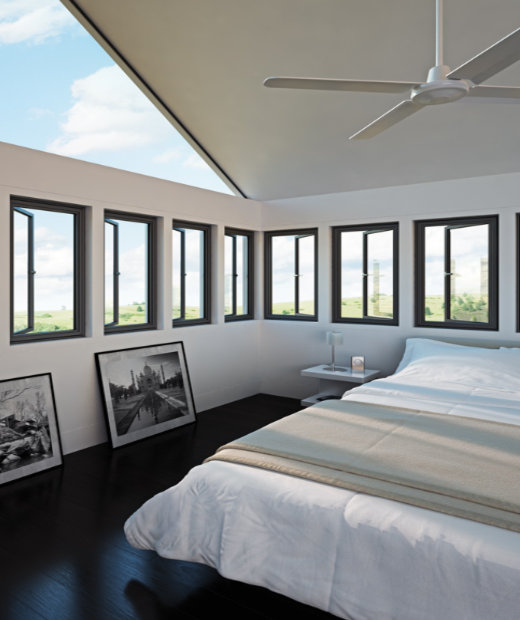Windows play an important role in a home’s curb appeal, and investing in an attractive window design can greatly improve the overall aesthetics of your property. There are many types of window frames to choose from, and aluminum window frames are becoming an increasingly popular choice. If you’re considering installing aluminum window frames, weigh the pros and cons carefully – while the material offers benefits such as long life, low maintenance, design flexibility and recyclability, it also poses potential thermal conductivity issues and the risk of condensation.
Because aluminum frames can be customized, they are often used in many different home designs, from modern and minimalist to traditional styles. Aluminum frames for sash and sash windows also offer a variety of design options. Hardware customization options include a variety of handles, locks, and hinges to provide flexibility in appearance and ease of use. Further research into these factors will allow you to make an informed decision about whether aluminum window frames are the right choice for your home or building project.

The durability of aluminum window frames is one of their most important advantages. Aluminum is a reactive metal that, when exposed to air, forms a thin oxide coating that prevents rust. Therefore, this material is widely used in the construction industry. Aluminum frames also require less maintenance because they don’t need to be painted like wood frames.
Aluminum frames are also energy efficient, but it is better to purchase frames that are resistant to thermal damage. It is a construction technology used in the manufacture of doors, windows and other building components to minimize heat transfer and improve energy efficiency. Thermally broken aluminum window frames usually have a barrier between the inside and outside of the window frame to prevent heat transfer. This improves energy efficiency by reducing heat loss in winter and heat gain in summer.
Aluminum window frames also offer a wide range of design options as they can be easily customized and customized to suit your specific needs. They come in a variety of colors, finishes and styles to create a unique aesthetic for your home. Additionally, the thin profile allows for more glass and fewer frames, creating a clean, modern look. Additionally, aluminum is highly recyclable, making aluminum window frames an environmentally friendly solution.
The price of aluminum window frames is one of their biggest disadvantages. They are generally more expensive than wood or vinyl. While the initial costs may be higher, it is important to weigh them against the long-term benefits such as durability and low maintenance costs. Aluminum is a highly conductive material and may not be suitable for insulation. However, heat transfer between the inside and outside of the house is only possible when using a metal frame that is not subject to thermal destruction.
Another disadvantage of aluminum frames is the formation of condensation. This can happen on aluminum window frames, especially in cold regions. When the frame temperature drops below the dew point, moisture can form on the surface. To avoid condensation when renovating aluminum windows, choose insulated frames and ensure there is adequate ventilation in your home. Although aluminum is generally rust-resistant, it can still be susceptible to corrosion under certain conditions, with galvanic corrosion being the most common. This occurs when other metals and aluminum interact, such as when aluminum comes into contact with carbon steel. Additionally, aluminum frames can corrode when exposed to salt water or salt air, so they are not the best choice if you live near the coast.






